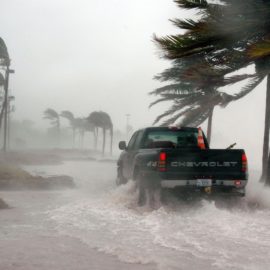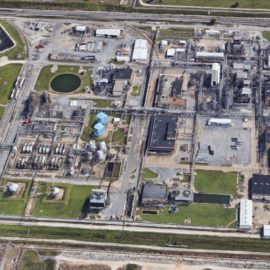
The recent leak of chlorine at a Plaquemine Parish was fudged and is being investigated.
A leak of dangerous chlorine gas at a plant near Plaquemine was worse than it was reported to be at the time, regulators and parish officials said. That means a shelter-in-place order for local residents was lifted after just three hours when it should have lasted about a day in a half — a “breach of the public trust,” Iberville Parish President Mitch Ourso said. The leak from Olin’s Blue Cube LLC operation, which is surrounded by the large Dow Chemical complex in Iberville and West Baton Rouge parishes, prompted 39 people to go to area hospitals with generally mild symptoms in the hours and days afterward, state health officials have said. “My duty as Parish President is to notify residents of chemical releases is very important,” Ourso said in a letter to north Plaquemine residents Monday. “The false reporting of chlorine levels by Olin personnel is of grave concern to me. Chlorine is a very toxic chemical that can cause serious injury to our residents in the vicinity of the leak.”
nola.com
The State Police and DEQ are investigating this obviously wrong report.
Louisiana State Police and the Department of Environmental Quality are investigating why the reports got it wrong. DEQ spokesman Greg Langley said officials are looking at the reported duration and amount of chlorine gas released — and the concentrations of the gas in the neighborhoods south of the plant. “That is under investigation, and we really can’t say much more about it,” Langley said. Olin officials didn’t respond to a request for comment emailed Monday evening and a follow-up Tuesday morning. Ourso wrote that he learned of the revelations in a meeting with state officials on July 25. Unfiltered with Kiran first reported the existence of Ourso’s letter Monday.
Lawsuits have been filed and are in Federal Court.
The leak triggered two state lawsuits filed in late April in Iberville. They have since been bumped up to federal court in Baton Rouge and consolidated. The plaintiffs are seeking class action status among residents affected by the leak. Patrick Pendley, one of the plaintiff’s attorneys, said he has just started the information gathering process from Olin and doesn’t know how much the chlorine emissions were understated, a lot or a little. “All I know is that it was understated. … That’s just not good, especially with a very toxic chemical like chlorine,” Pendley said.
A compressor failed and caught fire. But the compressor is not to blame for the false report.
The chlorine leak happened after a compressor failed and caught fire about 8:24 p.m. April 18, spilling the highly cooled liquid chlorine on the ground. The chemical can quickly vaporize into a gas at outside temperatures. The gas is heavier than air, can linger on the ground and accelerate fires. Emergency responders poured water on the leaking gas to make it more buoyant so it would rise. Residents reported a large gas plume towering over their neighborhood that night amid strong chlorine smells. La. 1 and other roads closed for several hours. The fire was out by 10:15 p.m. April 18. The north Plaquemine shelter-in-place order lasted about three hours on the night of April 18, from 9 p.m. to midnight. Residents were out and about the next day, on April 19, cutting grass and strolling young children on neighborhood streets. But parish officials said state authorities told them late last month that shelter-in-place order should have been 34.5 hours — or about a day and a half, lasting until the morning on April 20 — because of lingering chlorine gas levels. Such orders are designed to reduce residents’ exposure to harmful chemicals by having people remain indoors and take other measures to seal off their homes, like turning off their air-conditioners and closing their doors and windows. None of the people who ended up at area hospitals after the leak had symptoms significant enough to force them to be admitted to a hospital bed, state health officials said.
The company has not been up front starting with the initial report.
At the time, an Olin spokesperson initially reported the incident had led to no injuries. After the hospitalizations came to light, neither he nor others with the company explained how the earlier statement of no injuries squared with the number of people who ended up at hospitals. Langley, the DEQ spokesman, said he couldn’t say how agency officials knew the emergency air monitoring reporting had been inaccurate. In an analysis of why the compressor caught fire, Olin concluded in June that analyzers were not sensitive enough and missed chemical buildup in the equipment. That buildup broke loose when the compressor vibrated heavily during a startup April 18 and then cut off. The loose material moved and caused a blockage when workers tried to restart the compressor a second time, triggering the fire. The analysis cited a lack of guidelines on what to do when the compressor cuts off from high vibrations and called for regular checks of buildup and several other steps to avoid future problems, according to DEQ filings.
Over 6,000 pounds of chlorine were released.
In required after-the-fact reporting days following the leak, Olin officials had estimated for DEQ that 6,512 pounds of chlorine went into the air or on the ground. That volume significantly exceeded in just hours what Olin has reported releasing annually, on average, through permitted routes in recent years. It made the accidental leak, by far, the largest from the facility in the past seven years under Olin’s management, according to state health officials and regulatory records. A variety of entities were taking air samples during the leak in the hours and days afterward: DEQ, State Police, the U.S. Environmental Protection Agency and Olin or possibly Dow. While the Dow complex has its own internal air monitors, the data are private unless the companies agree to share them with agencies. Often, companies have standing agreements with agencies to share their data in emergencies, making them public. DEQ officials couldn’t immediately say which company actually conducted air monitoring inside and around Olin’s Blue Cube site: Olin, Dow or both companies. But Iberville officials said they take the view that it is the owner of the facility’s responsibility — in this case Olin — to report accurate information. Also, none of the public agencies have permanent fence line monitors around the 1,500-acre Dow site on the Mississippi River.
There is no easy way to verify the leaks as time lapses occur.
That means agencies can’t gather their own air data during an emergency until staffers and equipment arrive, usually an hour to several hours after an incident is reported to a state hotline. Olin officials first reported the leak to State Police 20 minutes after it started, according to a company timeline. The public air monitoring data that were reported also conflict somewhat. Parish officials reported at least twice the concentration of chlorine gas in the community, at 1 part per million, than what EPA had found. Even at the higher level, officials said the concentrations were far from lethal, which would require concentrations tens to hundreds of times higher. The higher level reported, however, could induce asthma-like attacks after an exposure of four hours, a handful of studies have shown. DEQ officials also suggested at the time that the chlorine levels in the community never reached a serious health risk based on their own air monitoring. They no longer found chlorine in the community by 6:15 a.m. April 19, officials said then. Some fence line detections were still occurring at low concentrations then, however.
the state agencies have not released their numbers yet.
Reports of DEQ’s and State Police’s actual readings have not been made public yet. It’s not clear what authorities may think the concentrations were now. Clint Moore, Iberville’s homeland security director, said parish officials weren’t informed in their recent talks with regulators what the actual chlorine gas levels were. He said parish officials were only informed that the levels were “much higher than what was reported to us and the shelter in place should not have been lifted.”
They come in, get tax breaks, pollute the air and then lie. Not good neighbors.



